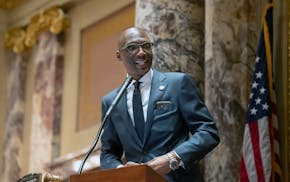There are just two doses of a COVID-19 vaccine left in the fridge at Good Samaritan Health Centers of Gwinnett in Norcross, Georgia. Once those shots have been used, the nonprofit fears it may have to charge its patients for what was once a free vaccine.
"Once we're out of it, we're not going to be able to serve them unless they can pay," said Greg Lang, chief financial officer at the nonprofit, which serves more than 25,000 uninsured Georgia residents. The shot can cost more than $100 out of pocket, plus the charge to administer it.
After COVID-19 vaccines transitioned to the commercial market last fall, the Centers for Disease Control and Prevention stepped in to ensure that adults without insurance, or those whose insurance plans did not fully cover the vaccine, could receive shots for free. The agency's Bridge Access Program provided roughly 1.5 million shots, said Dr. Georgina Peacock, the director of the immunization services division at the CDC. Nationwide, about 27 million adults do not have health insurance.
But the program ends this month, making it even harder for health centers to provide shots for free. The CDC announced in May that funding for the program, which clinics expected to last through December, would actually run out by the end of August. A spokesperson from the CDC said the agency is discussing strategies to increase vaccine access for people without insurance.
For community health clinics, the uncertainty comes at an already challenging time: COVID is circulating. Updated COVID vaccines are expected to arrive in the fall, driving more people into clinics seeking shots. And fall and winter will most likely bring new waves of cases.
Community health clinics often care for patients who are uninsured and unable to pay for vaccines out of pocket. Many are restaurant workers, cashiers, drivers and others who, without vaccination, are more vulnerable to infection and may lack the paid time off needed to stay home if they fall ill.
The New York Times spoke with staff members at 10 health centers across the United States who said that they are scrambling to sort out their next steps. Some said they would seek donations or other funding to cover the cost of the shots, or try to rely on doses supplied from state and local public health departments.
"We don't have a good alternative at this point, except to try to find some money to figure out how to buy some vaccines ourselves," said Dr. Michael Stacey, the chief medical officer of LifeLong Medical Care, a health center in California. LifeLong is trying to determine how it will afford to vaccinate people in homeless encampments. "When a program like this is dropped, we don't have a lot of money to do this work," he said. "We're already stretched."
Some community health centers could still provide vaccines for free or on a sliding scale, said Jennifer Tolbert, the director of state health reform at KFF, a nonprofit focused on health policy. But fewer providers will be able to offer the shots at no cost.
Dr. John Waits, the chief executive of Cahaba Medical Care Foundation in Alabama, said he was concerned that any cost to uninsured and underinsured patients would drive demand even lower than it already was. The center already has limited resources, and isn't sure how to keep covering the cost of the shots, he said.
Sun River Health, which provides care to more than 250,000 patients in New York, is hoping to partner with the state and New York City health departments to access at least some additional funds to obtain and distribute vaccines, said Roberta Kelly, the chief nursing officer there.
"All of this is really just winding down to impacting community health centers the most, because we're the ones who absorb most of the patients that are uninsured, underinsured, have poor access," she said.
Dr. Roxana Cruz, the chief innovation officer at the Texas Association of Community Health Centers, said she was concerned the state's community health clinics would similarly struggle to cover the full cost of the shots for patients. These clinics served more than 1.8 million Texans in 2022. The association recently secured two purchasing agreements with vaccine manufacturers that will allow it to buy shots at a lower cost, Cruz said. But even a lower price could be unaffordable for patients if they still have to pay out-of-pocket fees, she said.
Many clinics are hosting vaccine drives and back-to-school health fairs this week, which could help get more patients vaccinated while the cost is still covered, experts said. Children will still be able to receive free vaccines through a federal program, and many adults will still be able to access vaccines for free through Medicare, Medicaid and private insurance plans.
When Good Samaritan Health Centers of Gwinnett realized that it would be short on vaccines, the organization asked the local public health department to donate extra doses it doesn't use. But the department said no, Lang said: They didn't have enough to spare.
Man dies from injuries days after shooting in downtown Minneapolis

No flush toilets and angry neighbors: Problems pile up for St. Paul's new trash hauler

